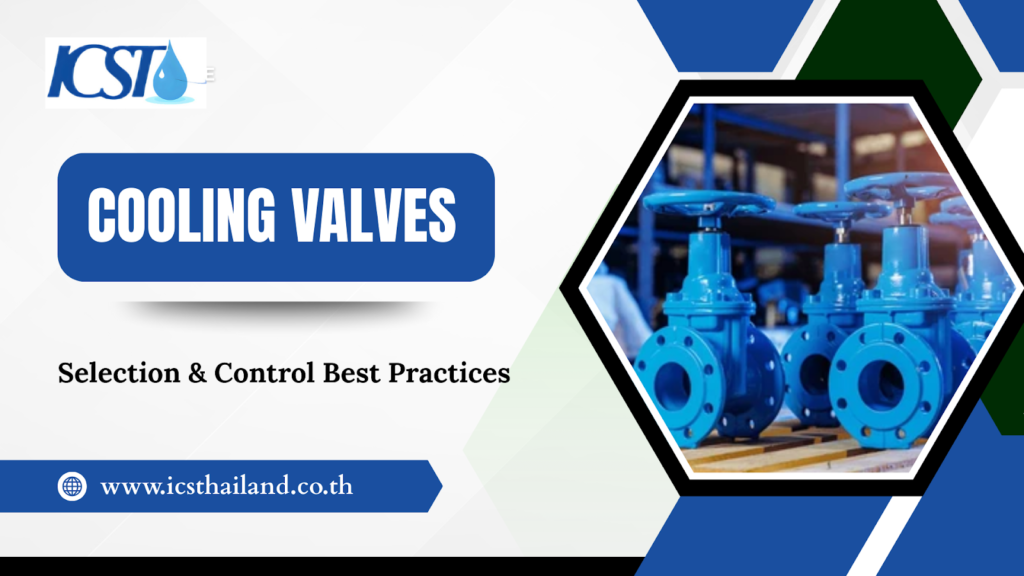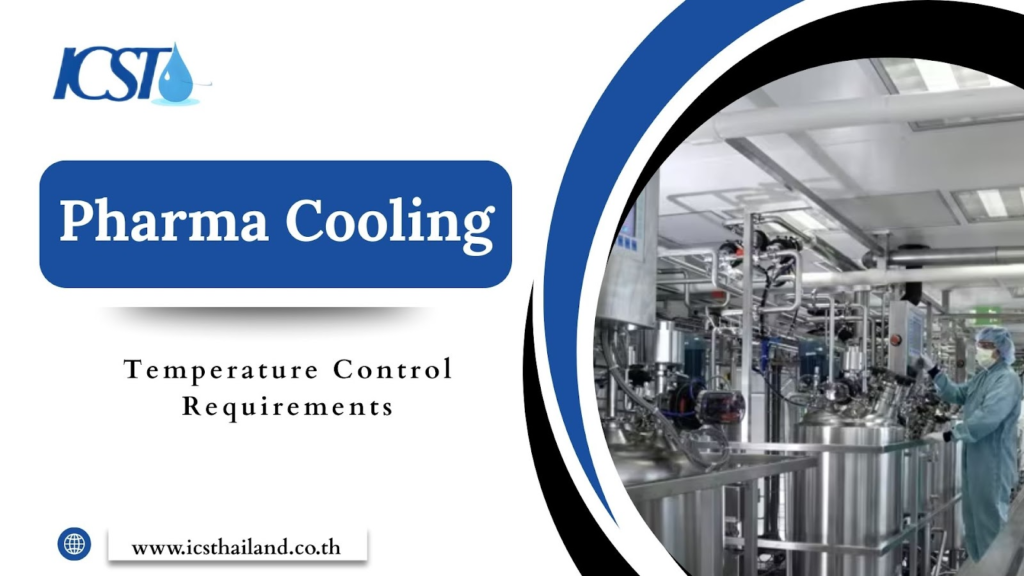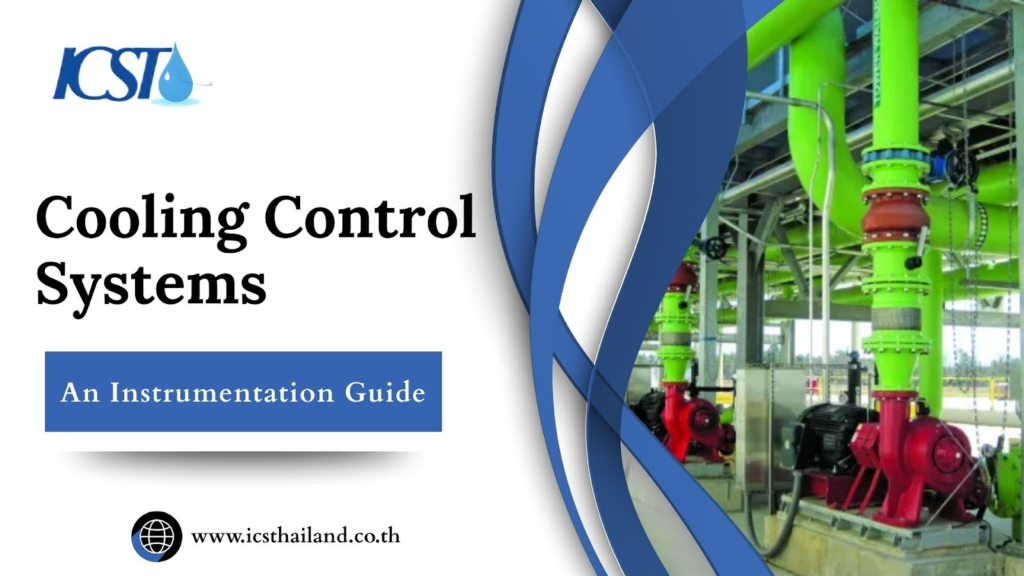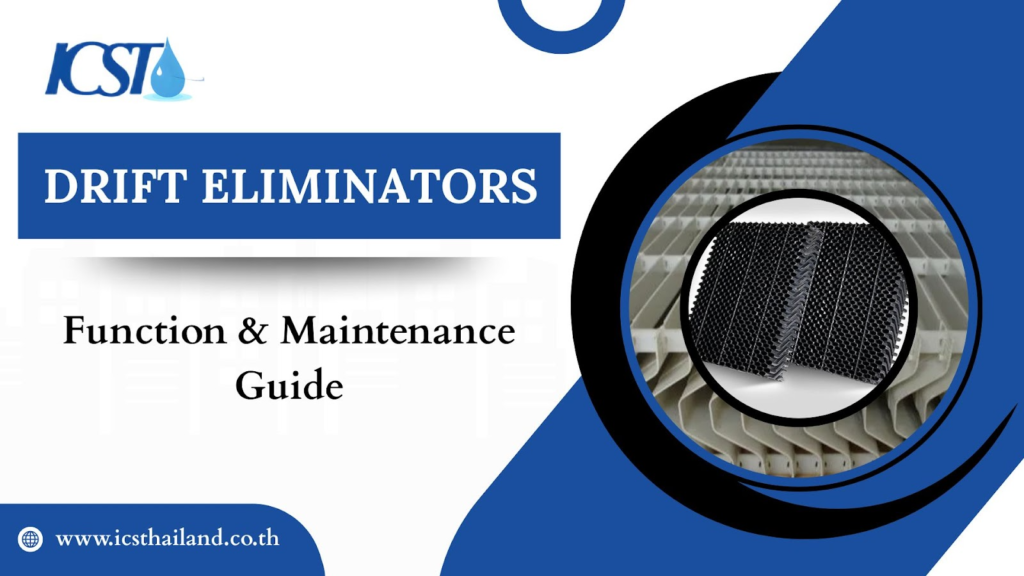If industrial pumps are the heart of a cooling system, then valves are its nervous system. They are the intricate components that precisely regulate flow, temperature, and pressure, ensuring every part of the system works in harmony. A seemingly small issue with a single valve can trigger a major system-wide failure, disrupt operations, and lead to significant energy waste.
Many facilities, however, overlook the critical importance of proper valve selection and control. This oversight often leads to inefficiency, premature equipment wear, and unstable process temperatures that can compromise product quality. Without the right valves operating correctly, even the most powerful chillers and pumps cannot deliver optimal performance.
This guide simplifies the world of cooling valves by exploring key types, helping you choose the right one, and explaining best practices for control and maintenance.
Table of Contents
ToggleUnderstanding the Core Functions of Cooling Valves
In any cooling system, what are the primary roles that valves play? They serve two main functions that are fundamental to operational integrity and control.
- Isolation: This is the ability to completely shut off the flow to a specific piece of equipment or area of the system. Isolation is crucial for performing maintenance, repairs, or system modifications without having to drain the entire network. Valves like ball valves and gate valves are designed for this purpose, providing a secure barrier when needed.
- Control/Regulation: This refers to the ability to modulate, or adjust, the flow of the cooling fluid. By carefully controlling flow rates, these valves precisely manage temperature and pressure throughout the system. Globe valves, butterfly valves, and Pressure Independent Control Valves (PICVs) are engineered for this kind of precise regulation.
The Main Types of Valves for Industrial Cooling Systems
Selecting the right valve starts with understanding the different types available and their intended functions. Industrial cooling systems typically use a combination of manual valves for isolation and control valves for regulation.
Type 1: Manual Valves (for Isolation)
When you need a simple and reliable on/off function, which valves should you choose? Manual valves are designed for straightforward isolation.
- Gate Valves: These valves are ideal for applications requiring a full, unobstructed flow when open and a complete shut-off when closed. Their design creates minimal pressure drop, but they are not suitable for throttling or regulating flow.
- Ball Valves: Known for their durability and excellent shut-off capabilities, ball valves provide a bubble-tight seal. They are operated with a quick quarter-turn, making them perfect for rapid on/off control.
Type 2: Control Valves (for Regulation)
For applications that demand precise adjustments to flow and temperature, which valves offer the best performance? Control valves are built for the task of modulation.
- Globe Valves: These are the industry standard for throttling applications. Their internal design allows for highly precise and repeatable flow control, making them perfect for maintaining stable process temperatures.
- Butterfly Valves: Offering a lightweight and economical solution, butterfly valves are often used in large-diameter pipes where space and weight are concerns. They provide good control and are relatively quick to operate.
Comparison of Common Industrial Cooling Valves
| Feature | Gate Valve | Ball Valve | Globe Valve | Pressure Independent Control Valve (PICV) |
| Primary Function | Isolation (On/Off) | Isolation (On/Off) | Control (Throttling) | Control & Balancing |
| Flow Control | Poor (Not for throttling) | Poor (Not for throttling) | Excellent | Excellent, regardless of pressure |
| Flow Path | Straight, unimpeded | Straight, unimpeded | Restricted, Z-shaped | Variable, adjusts for pressure |
| Pressure Drop | Very Low | Very Low | High | Very Low (Maintains Constant Flow) |
| Best For | Full shut-off and isolation | Quick on/off action; bubble-tight seal | Precise flow control in clean fluid systems | All modulating applications eliminate manual balancing |
| Primary Advantage | High flow capacity; minimal pressure loss | Quick, simple operation | Precise throttling ability | Enhanced energy efficiency & simplified commissioning |
A New Standard: Pressure Independent Control Valves (PICVs)
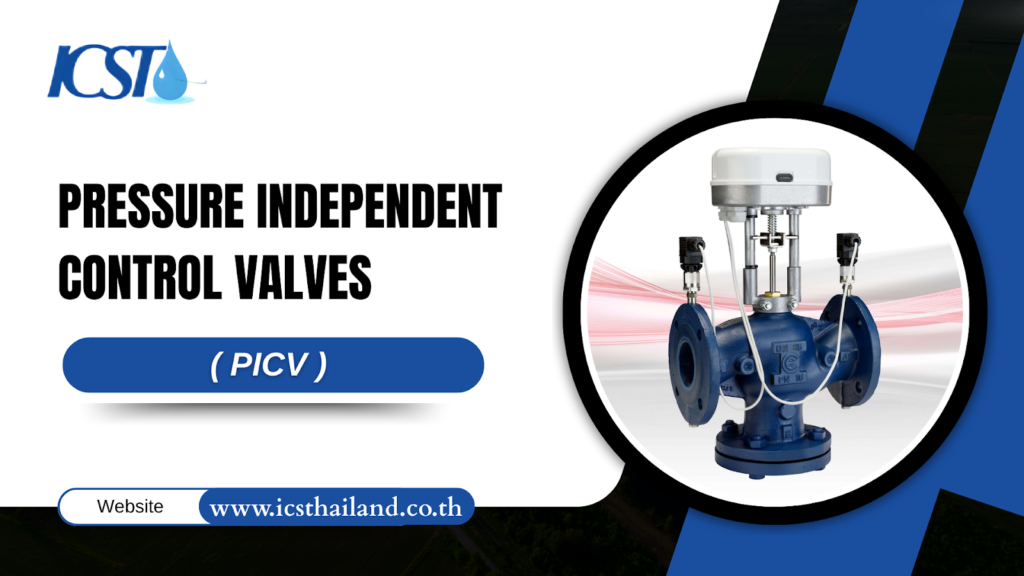
As technology advances, a new type of valve is setting the standard for efficiency and control in modern cooling systems. The Pressure Independent Control Valve, or PICV, represents a significant leap forward in hydronic system design.
What is a PICV?
A PICV is an advanced valve that combines the functions of a control valve, a dynamic balancing valve, and a differential pressure regulator into a single, compact unit. This integration allows it to perform multiple roles that would traditionally require several separate components.
How it works
The genius of the PICV lies in its ability to automatically maintain a constant flow rate to a cooling coil or other terminal unit, regardless of pressure fluctuations elsewhere in the system. An internal diaphragm or cartridge dynamically adjusts to changes in system pressure, ensuring that the desired flow set by the actuator is always delivered.
Why are they superior?
Why are PICVs becoming the preferred choice for high-performance cooling systems? Their advantages directly address the most common challenges in hydronic control.
- Enhanced Energy Efficiency: PICVs prevent “overflow” conditions, where more chilled water is pumped than necessary. By ensuring that each terminal unit receives only the required flow, they eliminate energy waste from over-pumping and dramatically reduce pump energy consumption.
- Simplified Balancing & Commissioning: Traditional systems require a time-consuming process of manual balancing to ensure proper flow distribution. PICVs eliminate this step entirely, as they are inherently self-balancing. This saves significant time and labor during system commissioning.
- Improved Temperature Control: By delivering a stable flow rate, PICVs prevent the “hunting” phenomenon, where temperatures fluctuate as the control valve over-responds to pressure changes. The result is precise, consistent temperature control, which improves comfort and process stability.
The Valve Selection Framework: Beyond Type and Size
Choosing the right valve involves more than just picking a type and size from a catalog. A systematic approach is necessary to ensure optimal performance and reliability. This framework outlines the essential steps for making an informed decision.
Step 1: Define the Application & Function
First, what is the primary purpose of the valve? Answering this question will narrow down your options considerably.
- Will the valve be used for simple on/off isolation, or will it need to perform continuous modulation to control temperature?
- What are the characteristics of the fluid? Consider its temperature, operating pressure, and any corrosive properties that could affect the valve materials.
Step 2: Calculate the Valve Sizing (Cv Value)
Next, how do you ensure the valve is the correct size for the job? This requires understanding the concept of the flow coefficient, or Cv.
- The Cv value represents a valve’s flow capacity; it is the volume of water (in U.S. gallons per minute) that will pass through the valve with a pressure drop of 1 psi.
- It is critical to calculate the required Cv for your specific application and select a valve that matches it closely. Oversizing a control valve is a common mistake that leads to poor control and instability.
Step 3: Consider Valve Authority
How can you guarantee that a control valve will have a meaningful impact on flow? This is where valve authority becomes important.
- Valve authority is the ratio of the pressure drop across the fully open control valve to the total pressure drop of the circuit it controls. For a valve to have effective control, it must command a significant portion of the total pressure drop.
- A low authority means the valve will have little effect on flow, leading to poor control. PICVs inherently solve this problem, as they are designed to maintain full authority regardless of system pressure changes.
Step 4: Evaluate Material & Connection Types
Finally, what materials and connection types are suitable for your system? The right choices will ensure longevity and ease of installation.
- Common materials include brass, bronze, and stainless steel. Stainless steel offers excellent resistance to corrosion, while brass and bronze are cost-effective choices for standard chilled water applications.
- Connection types like threaded, flanged, or soldered are chosen based on the pipe size, system pressure, and maintenance requirements. Flanged connections, for example, are common on larger pipes and allow for easier valve replacement.
Control Best Practices & Maintenance Checklist
Proper valve selection is only half the battle. Implementing sound control strategies and a regular maintenance schedule is essential for sustained performance and efficiency.
Control Best Practices
How can you optimize the way your valves are controlled? Modern technology offers powerful solutions.
- Integration with Building Management Systems (BMS): Use modern electronic actuators for your control valves and integrate them with your BMS. This allows for real-time data monitoring, automated control strategies, and remote adjustments, leading to smarter energy use.
- Preventing “Hunting”: Proper valve sizing, correct Cv calculations, and the use of PICVs are the best defenses against hunting. This unstable, rapid opening and closing of valves wastes energy and causes excessive wear on the actuator and valve components.
Maintenance Checklist
What routine checks should be performed to keep valves in optimal condition? A proactive maintenance plan prevents unexpected failures.
- Regular Inspections: Periodically conduct visual checks for any signs of leaks, corrosion, or physical damage to the valve body and actuator.
- Actuator Check: Verify that actuators are responding accurately and smoothly to control signals from the BMS. Check for any delays or erratic movements.
- Sealing & Packing: Inspect the valve stem for any leaks. Adjust the packing nut or replace the seals as needed to prevent fluid loss.
- Lubrication: Follow the manufacturer’s guidelines to lubricate any moving parts, such as the valve stem and actuator linkages, to ensure smooth operation.
Conclusion
A cooling system’s true efficiency and reliability depend not just on its major components, but on the strategic selection, sizing, and control of its valves. These devices are the key to unlocking a system’s full potential for performance and energy savings. While it may seem complex, understanding and implementing these best practices can transform an inefficient system into a highly optimized one.
Selecting the correct cooling valves and integrating them into a precise control strategy requires specialized knowledge and expertise. An expert can analyze your system’s unique demands, identify opportunities for improvement, and ensure that every component works together seamlessly.
This investment in expertise pays for itself through lower energy bills, reduced maintenance costs, and improved operational reliability.
Don’t let inefficient valves drain your profits. For professional system audit, expert valve selection, and installation services, contact the cooling system specialists at ICS Thailand today.
Frequently Asked Questions
What is the difference between an isolation valve and a control valve?
An isolation valve’s sole purpose is to completely shut off the flow of fluid to a specific part of a system. This is essential for maintenance or repairs. A control valve, on the other hand, is designed to modulate or adjust the flow with precision.
What is a PICV, and why is it superior?
A PICV is a single valve that combines the functions of a control valve, a dynamic balancing valve, and a differential pressure regulator. It is superior because it automatically maintains a constant flow regardless of pressure changes, which improves efficiency and control.
What is the most common mistake in valve selection?
The most common mistake is oversizing a control valve. This leads to inefficient operation, poor control, and premature wear.
What is “hunting” in a cooling system?
“Hunting” is when a control valve rapidly opens and closes in an unstable way. This wastes energy and causes excessive wear on components.
How do I choose the right valve for my system?
To choose the right valve, you must define its function (isolation or control), calculate the correct size (Cv value), consider its authority, and select the right material for your application.
